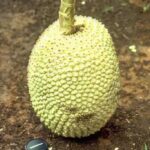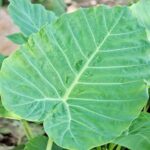The Honey locust tree, also known as Thorny locust, derives its genus name (Gleditsia) from a former director of the Botanical Garden in Berlin. Its species name (G. triacanthos) means ‘Three thorns’, which refers to the typical arrangement of its young thorns. Although the thorns may appear as spines at first glance, upon closer inspection, they are real thorns, as seen in the picture below.
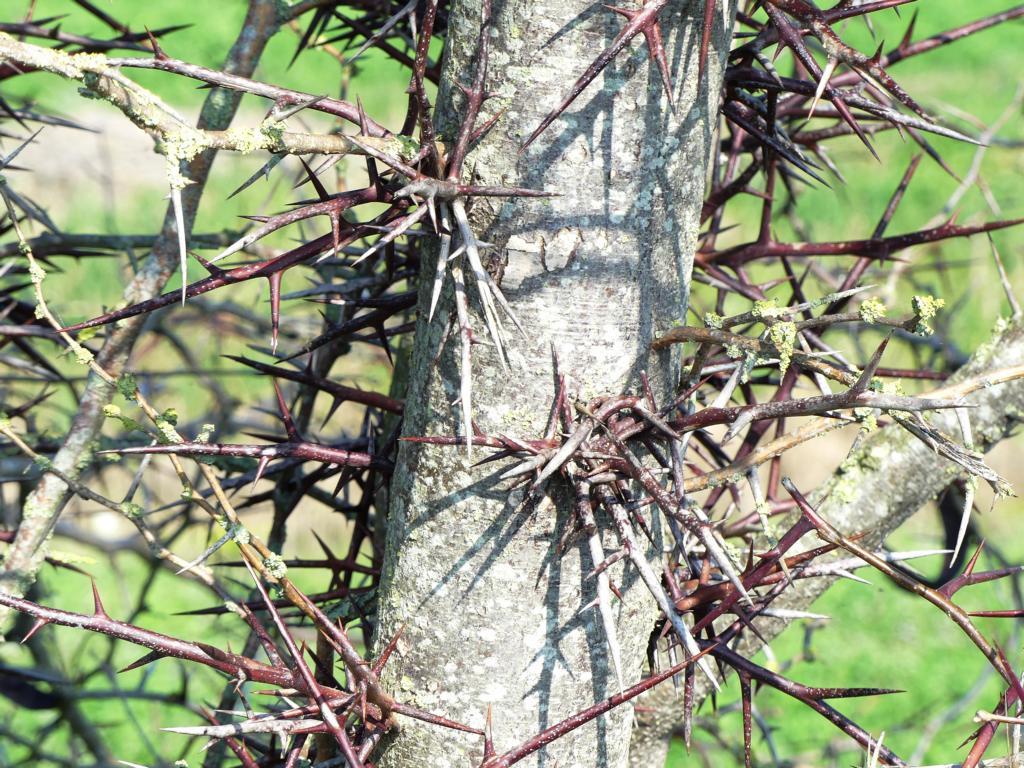

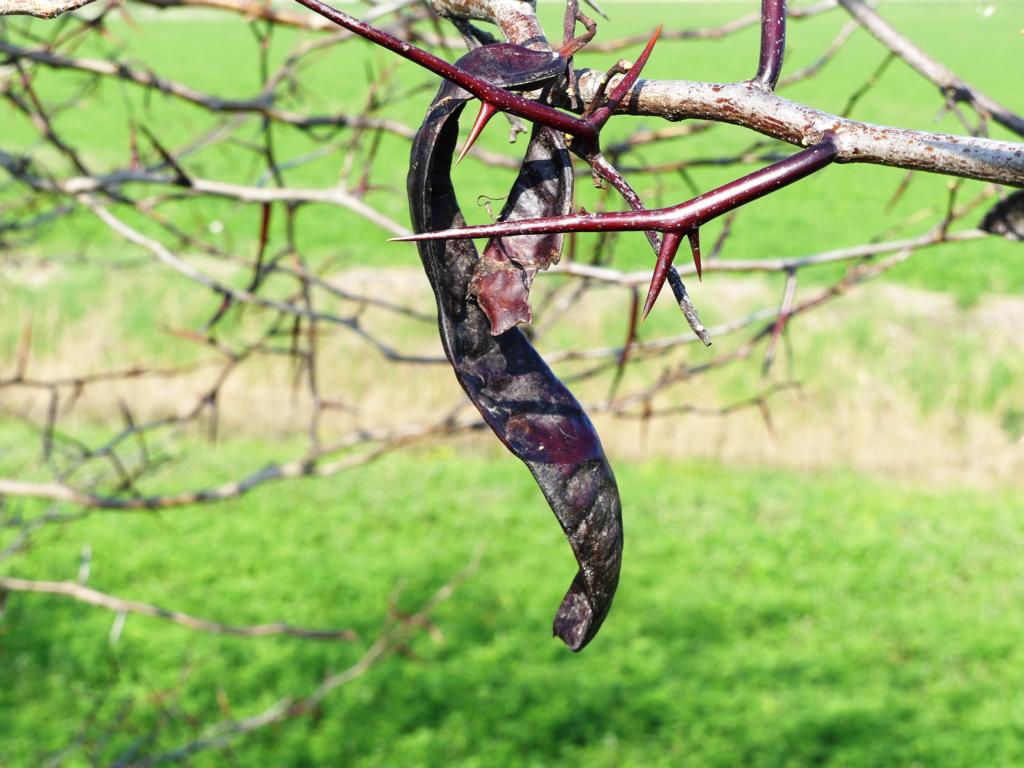
These trees are native to the central plains of the United States but have been introduced worldwide in well-watered, temperate climates. They have now become an invasive species outside their native range.
Honey locust compared to Carob tree
Gleditsia triacanthos is closely related to the Carob tree (Ceratonia siliqua), also known as ‘St. John’s bread’ in English. Both Honey locust and Carob trees have pods with edible bulbs and seeds. However, Honey locust pods are much thinner and contain less pulp than Carob pods, and the tree has many thorns, unlike the Carob tree, which has none. Carob pods are ground into a fine powder and used as a cocoa and/or sugar replacement.
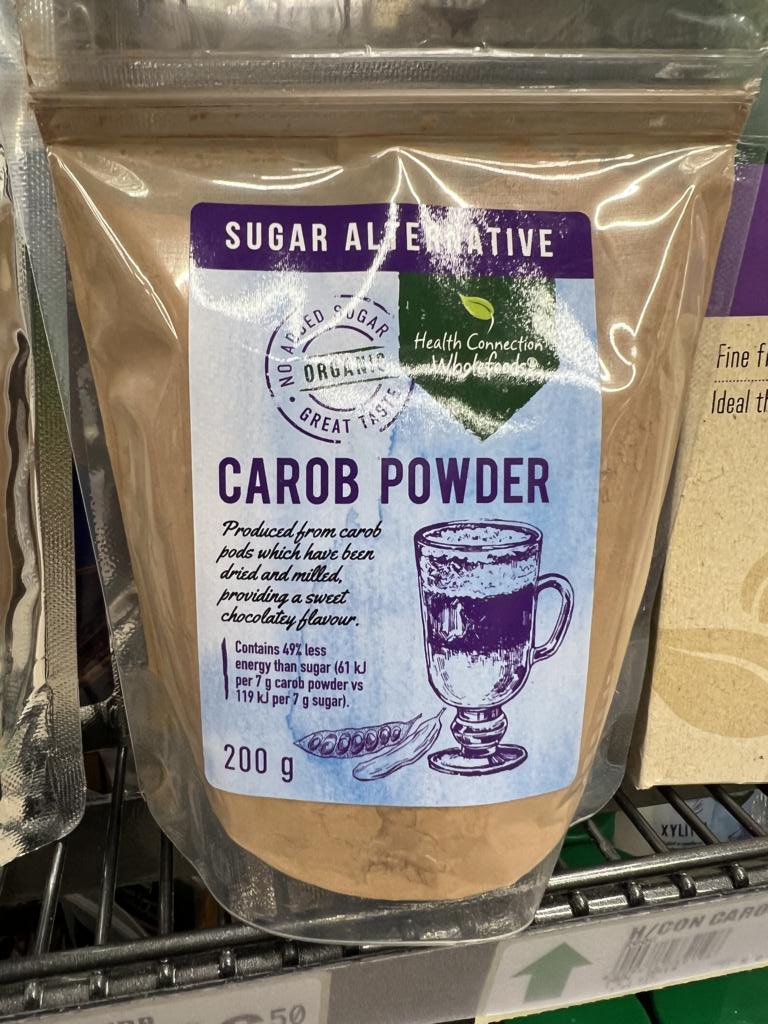
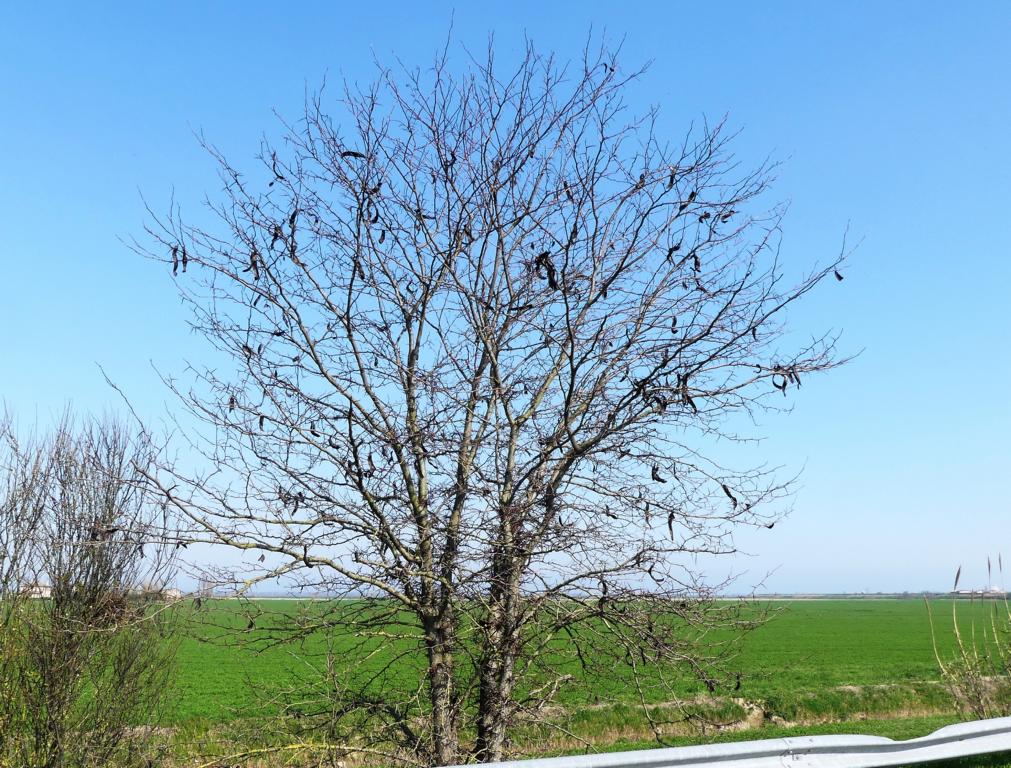
The Honey locust tree, the Carob tree’s wilder brother, grows in many places worldwide with mild climates and prefers roadsides where wider seed dispersal and water supply are beneficial factors. If someone chooses to live off the land, Honey locust pods can be a valuable source of energy.
At which time of the year are Honey locust pods edible?
When someone – in the Northern Hemisphere – finds a Honey locust tree, there will be plenty of pods on the tree. New leaves only appear in late spring, followed by flowering and the formation of young pods. This occurs when other plant food sources are readily available (April – July). Thereafter, the pods can be eaten from August to March. Even in winter, pods do not easily fall from the tree, and enough good ones are available on the tree for harvesting.
Edibility of the content of Honey locust pods
Unripe, green pods already contain a sweet, sticky, and aromatic pulp with a sugar content of between 12 – 42%, depending on the location, as shown in this literature. However, the pulp in unripe green pods can be irritant to the throat and should be cooked before consumption.
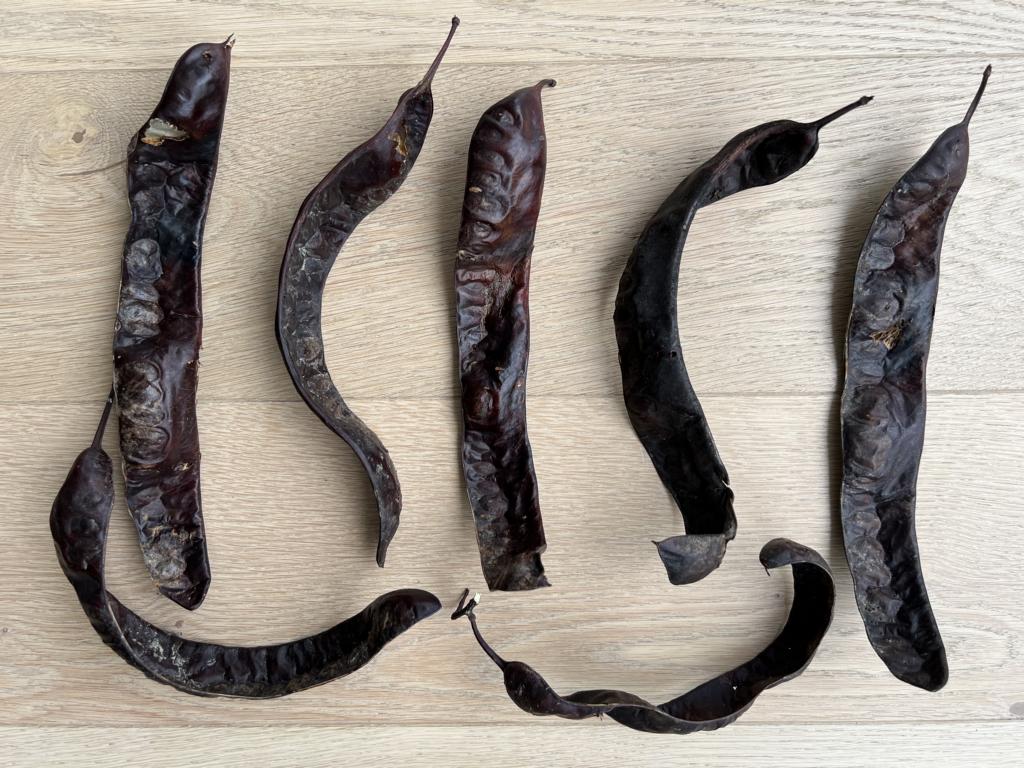


Ripe, older pods are often described in literature as ‘bitter, tough, and inedible,’ and their smell is sometimes described as ‘terrible.’ However, the author does not agree with this notion.
Pods in the above pictures were harvested at the ‘Delta de Po’ Nature Reserve in Italy on March 21st, 2023. Although the Honey locust tree did not have any leaves, the area around the tree was already lush green. Four of the pods were harvested from the tree, and three were collected on the ground under the tree. All four harvested pods contained sweetish-sour sticky pulp, which was perfectly edible and delicious. The taste was very similar to Carob, and the texture was like toffee or caramel. The smell was also the same as the pulp’s smell from Carob/St. John’s trees, which smell very pleasant. However, it is important not to eat the maroon-brownish outer skin as the shell contains a high content of tannins.
The seeds, also called legumes, are edible but require soaking overnight and cooking. They contain approximately 30% sugar, 10-24% protein, and elevated levels of calcium and phosphorus.
Also, the thorns of these trees can be used
And, moving slightly away from the topic of edible pods, the thorns of the Honey locust tree can also be utilized. These thorns are long and very durable and were once used in place of nails. Nowadays, they are notorious for puncturing tires. In my personal opinion, they are even more dangerous to tires than the sickle thorn (‘Toyota-tree’) found in Africa.
Lessons learned from Honey locust pods:
- Honey locust pods contain a sweet-sour, sticky, and aromatic pulp in both their green and ripe stages.
- Green pods must be cooked before consumption.
- Ripe pods can be harvested throughout the winter (in the Northern Hemisphere).
- The pulp has a high sugar content ranging from 12 – 42%, depending on the location where it grows.
- The seeds are edible after cooking and contain approximately 30% sugar and between 10-24% protein.


